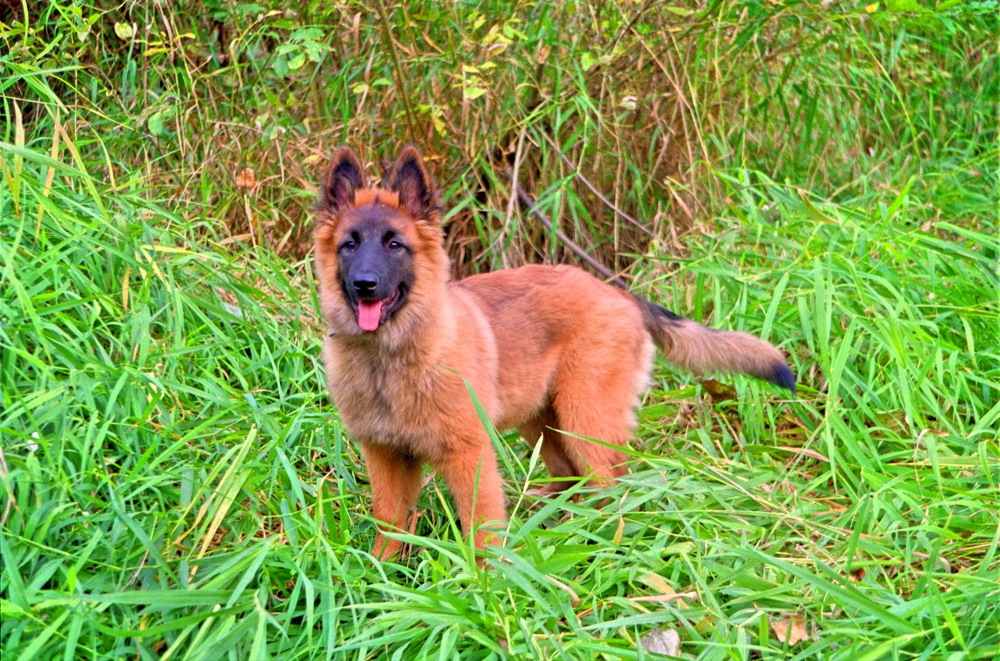
1. Fifth Pick of the Litter2. Growing Up
3. Competition
4. In the Mountains
5. On the Beach
6. Buffy
7. Old Age

Like most dogs, Belgians have both an undercoat and an outer coat of hair. The puppy hair shown in the previous photos was all undercoat. Here, at age 4 months, the outer coat is beginning to show.
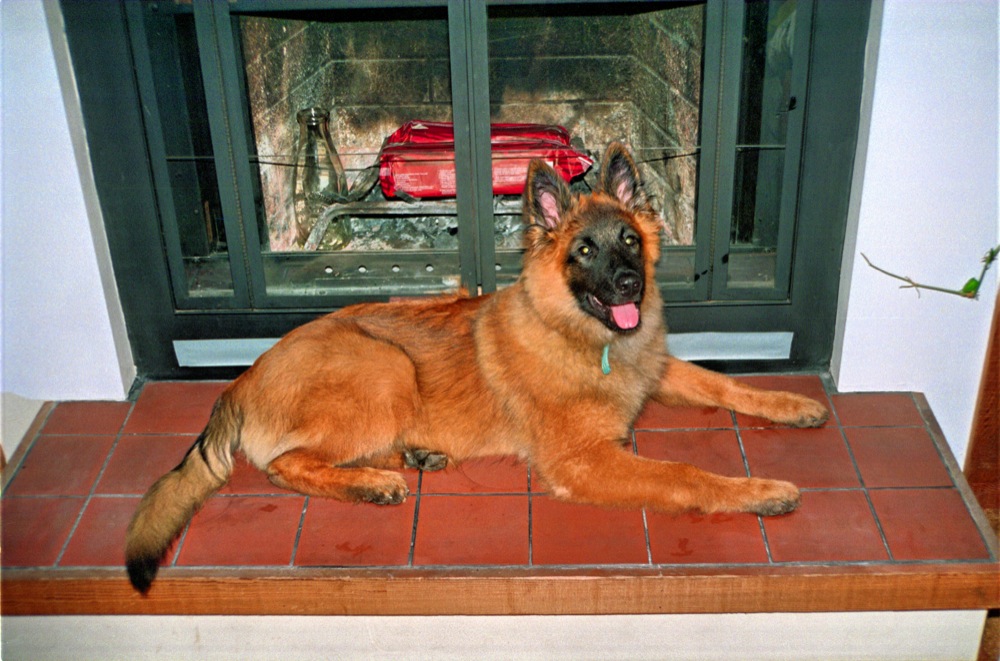
Here is Chip at 5 months. As the name implies, Belgian shepherds were used to herd livestock in nineteenth-century Belgium. Bred mainly for their intelligence, the dogs had a wide variety of colors, coats, and, no doubt, sizes. By the end of the nineteenth century, a few variations attracted the attention of dog fanciers, including dogs with long-hair, short-hair, and curly hair, and all-black dogs and light- to reddish-brown dogs with a black overlay.
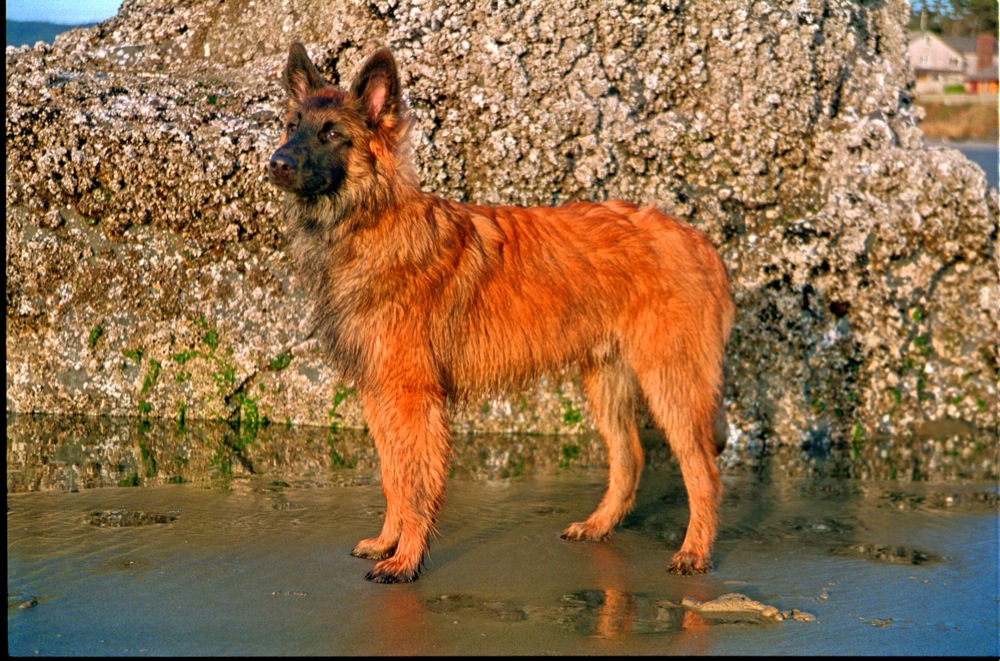
Two colors and three coat variants made a possible six breeds, and all six are mentioned in a 1935 AKC breed book. Today, only four are left: the long-haired black, called Groenendale; the short-haired brown, called Malinois; the curly-haired brown, called Laekenois; and the long-haired brown, or Tervuren. (The now-extinct short-haired black probably contributed to the breed now known as Dutch shepherd.)
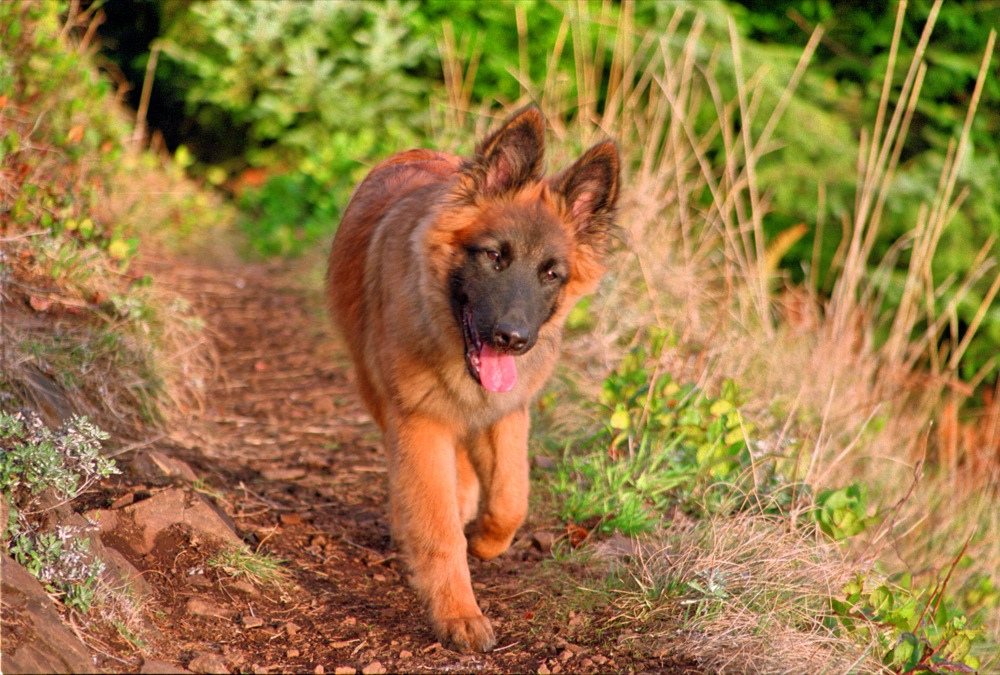
The standard for all of the modern Belgian breeds are identical in every way except for the coat. In most countries, they are treated as the same breed. But discord over the breed standard led American Terv owners to split from the Groenendales in 1959. Today, the Malinois is the most numerous of the Belgian breeds as it is prized by police for its intelligence and ease of grooming.
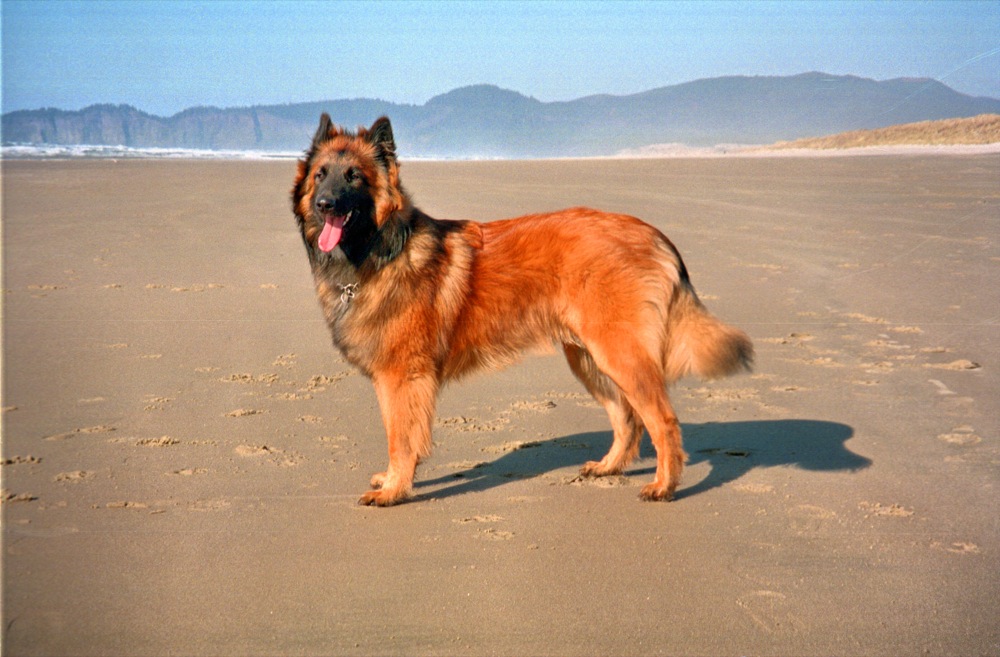
At eight months, Chip is showing a little more black. But it will be more than three years before his coat reaches full maturity.
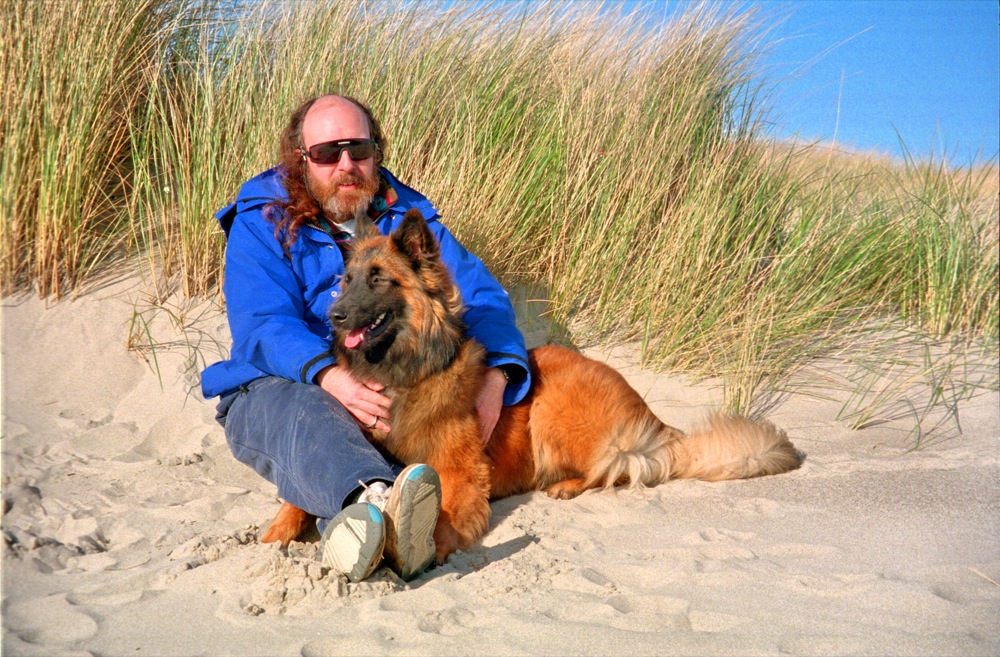
At eight months, he is also nearly his fully mature weight of 70 pounds. Stand an adult Terv next to a 90 pound labrador and both look the same size; but 20 pounds of the Terv's apparent weight is just hair.
While Groenendales are just black, Tervurens can range from light brown to reddish brown (or, in a few cases, grey). At 13 months, Chip is clearly on the red side, which pleased us a great deal. Here he is in the Salmon River Wilderness of the Mt. Hood National Forest.
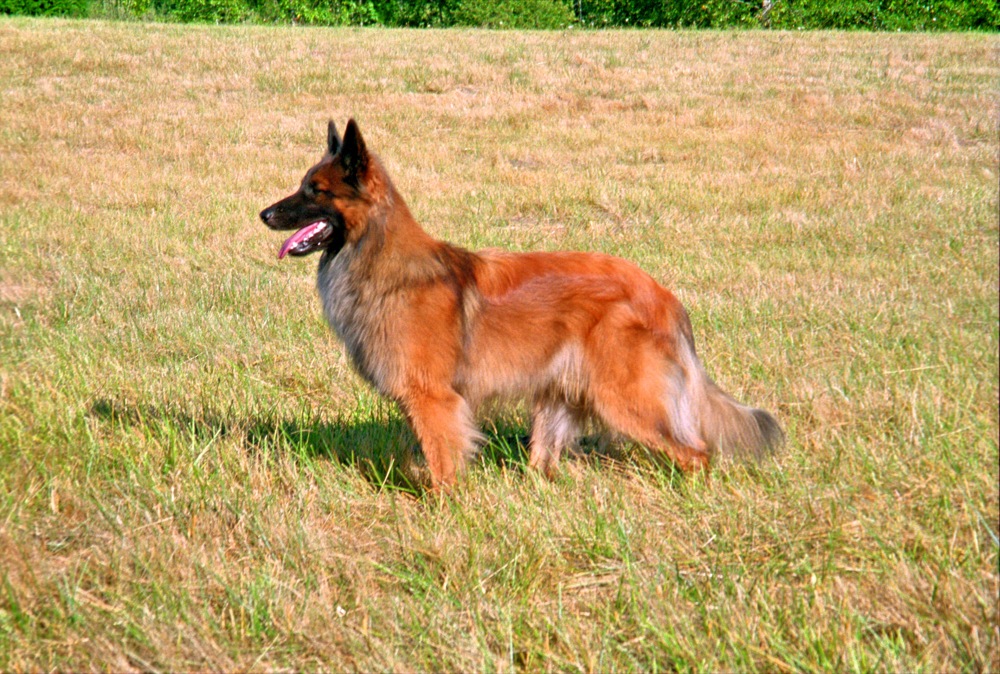
At 14 months, Chip is now full-sized but his coat has yet to gain the black overlay. I loved his red coat so much that it made me a little sad that it would eventually be partly covered by black, but as it turned out he just got more and more beautiful through most of his life.
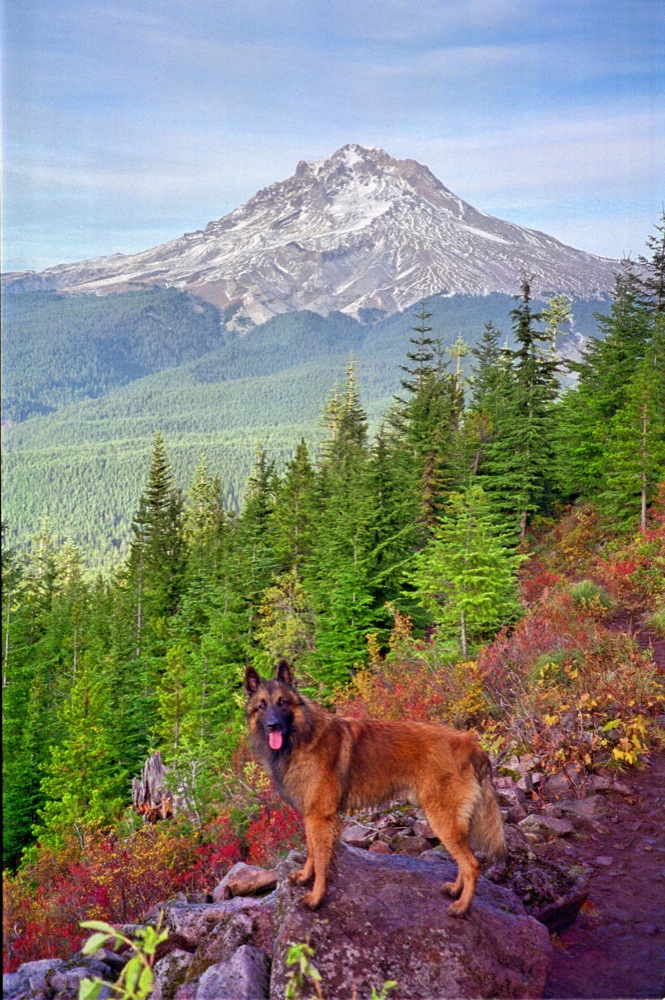
What really captured our hearts, however, was not his appearance but his personality. Like any dog, he enjoyed hiking with us, as here in the Mt. Hood National Forest.
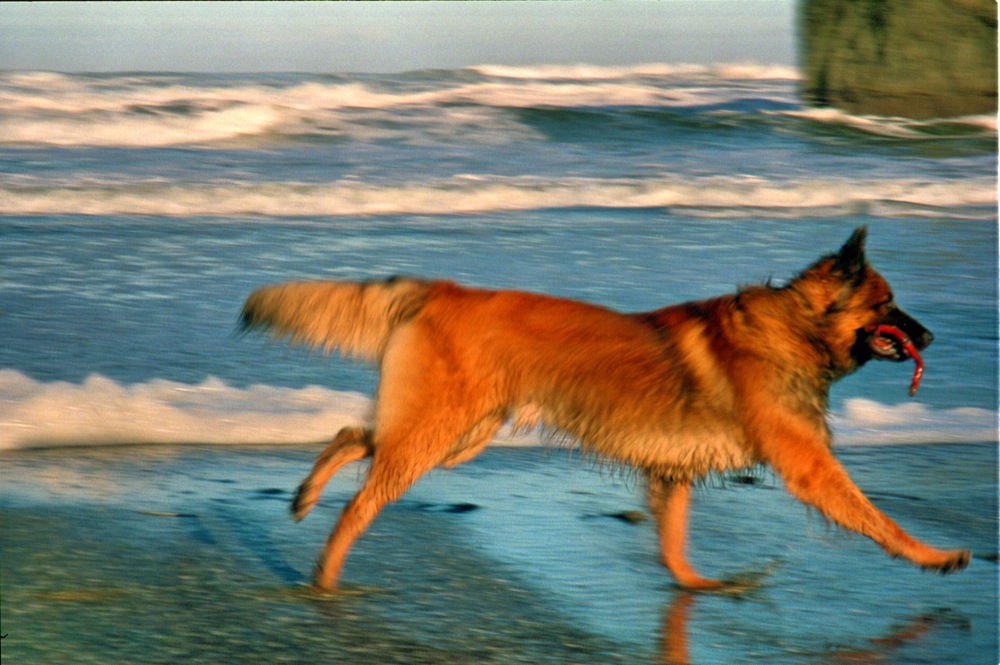
Or here, at 16 months, running on the beach.
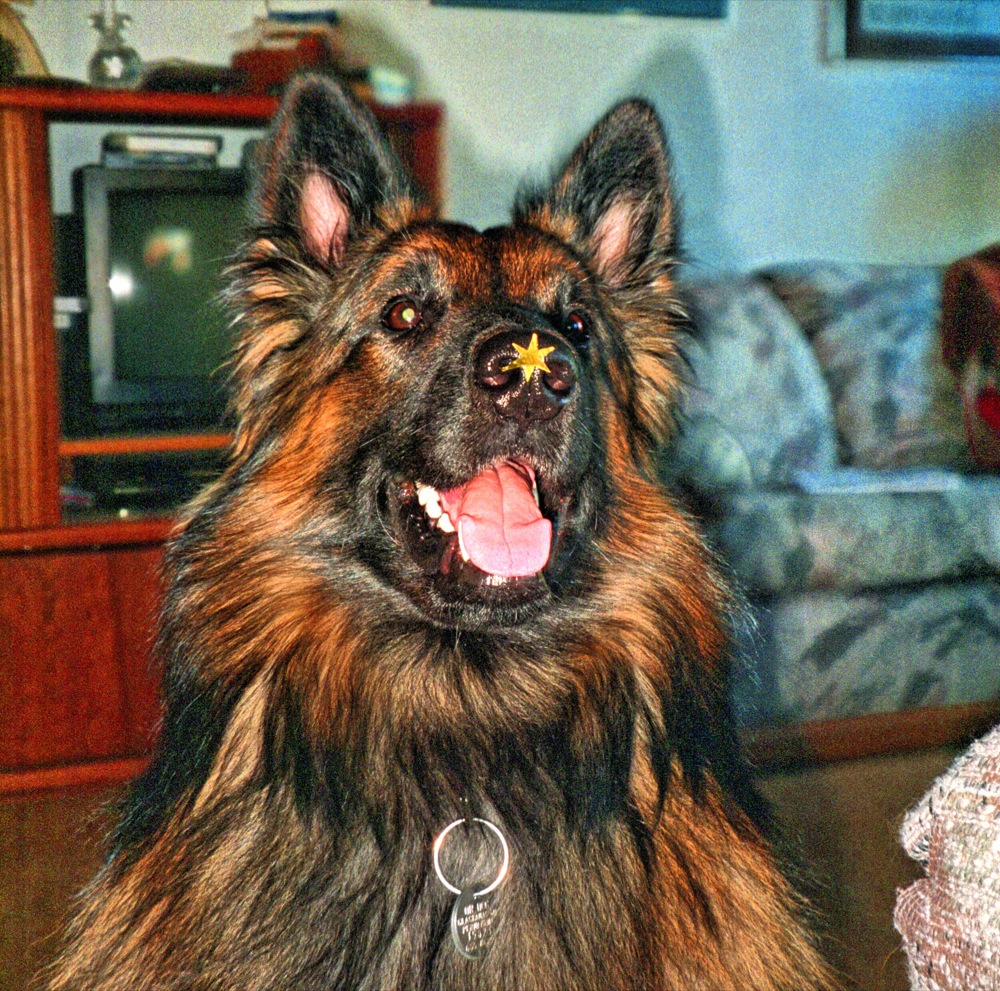
Clowning around at Christmas, 1994.
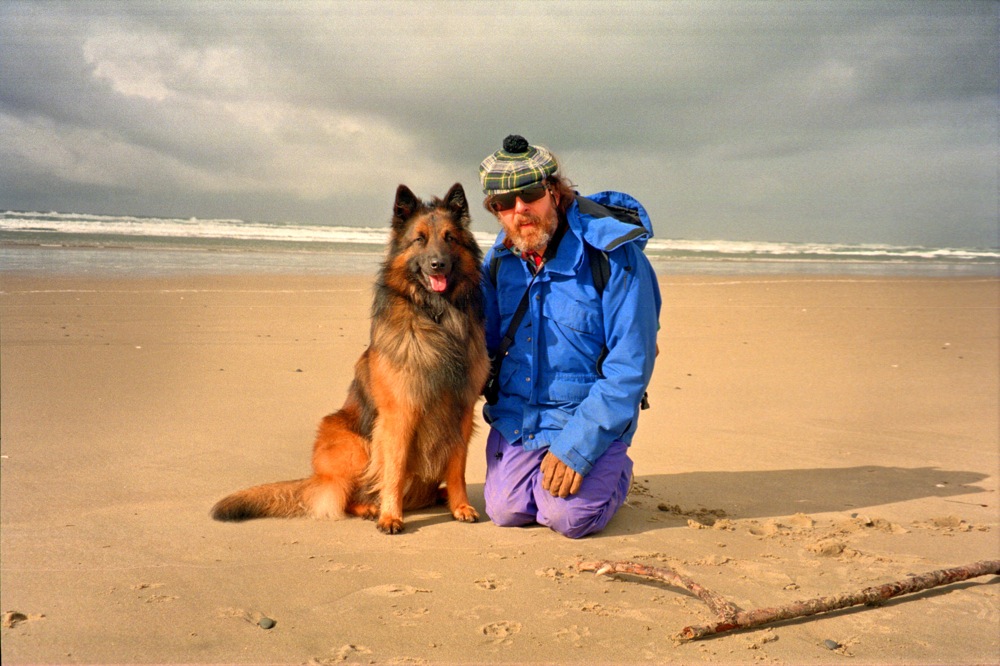
Chip was a wonderful companion (as shown here at 19 months). Like any herding dog, he loved to be with his family. But he was also an outstanding ambassador, being very friendly with everyone he met. He introduced us to many friends and enticed us to visit many places. Eventually, we based all our important decisions on what he wanted or needed: where we lived, the kind of car we drove, how we got around. For example, when we decided to travel from Oregon to New Jersey to visit Vickie's family, we drove so we would not have to subject him to being crated and put in the baggage compartment of a plane.
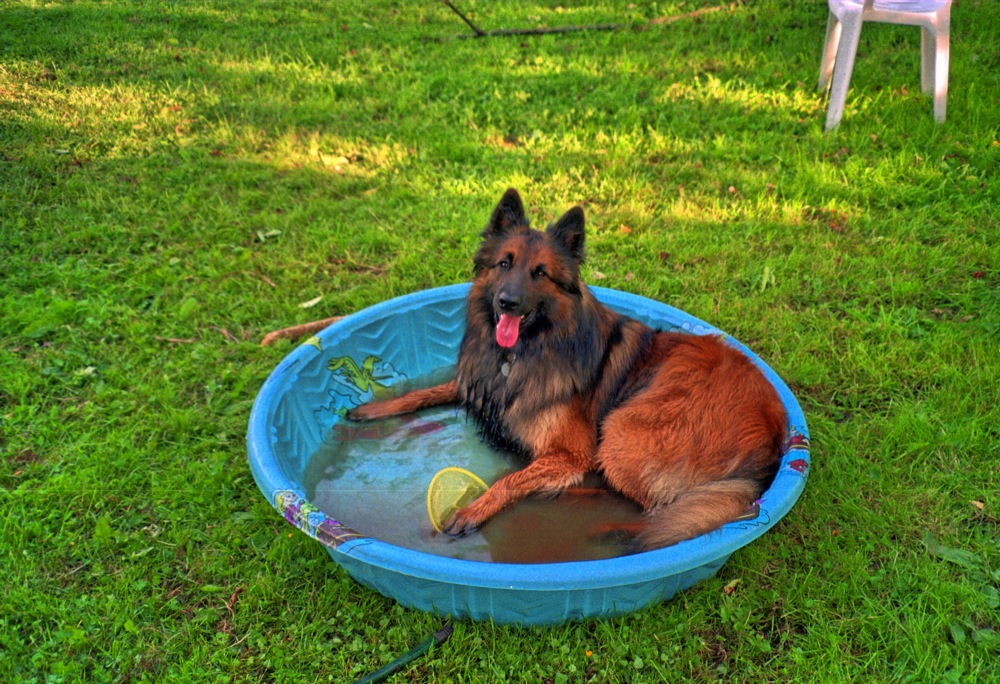
While his long hair looked elegant, it was also a drawback for him in hot weather. So he loved to be in the water, as here at 22 months.
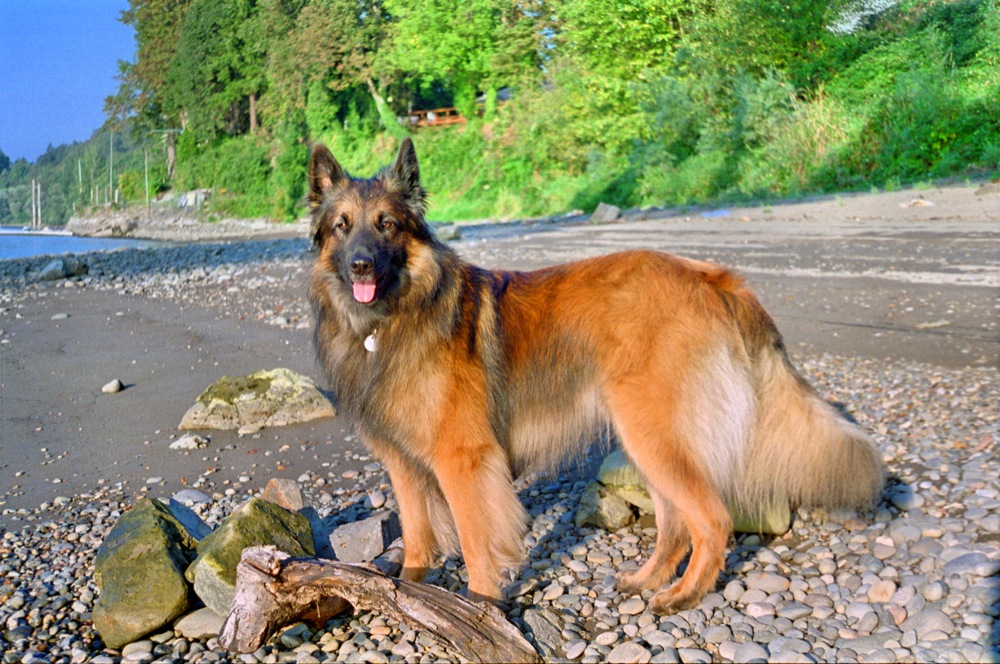
One of Chip's qualities that we didn't notice at first was that he rarely barked. He didn't bark at other dogs and rarely at people. He mainly barked when he had something to say. Depending on the context, his bark could mean, "My stomach is upset and I need to go outside NOW!" or "I want to be with you but you are going somewhere (across a stream, up a steep cliff) that I can't go." When he was older, he would sometimes bark when one of us returned from some trip, evidentally saying, "You should have taken me with you."
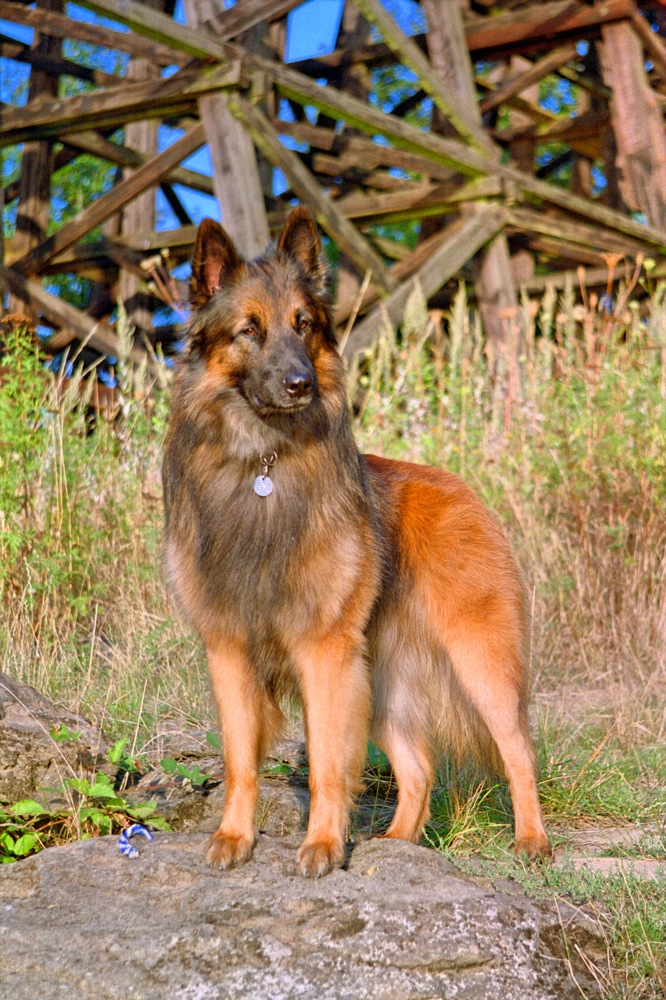
Chip was happy to pose for photos. Simply say, "Hop up," and he would jump on the nearest rock, log, or stump and stand waiting as long as you wanted.
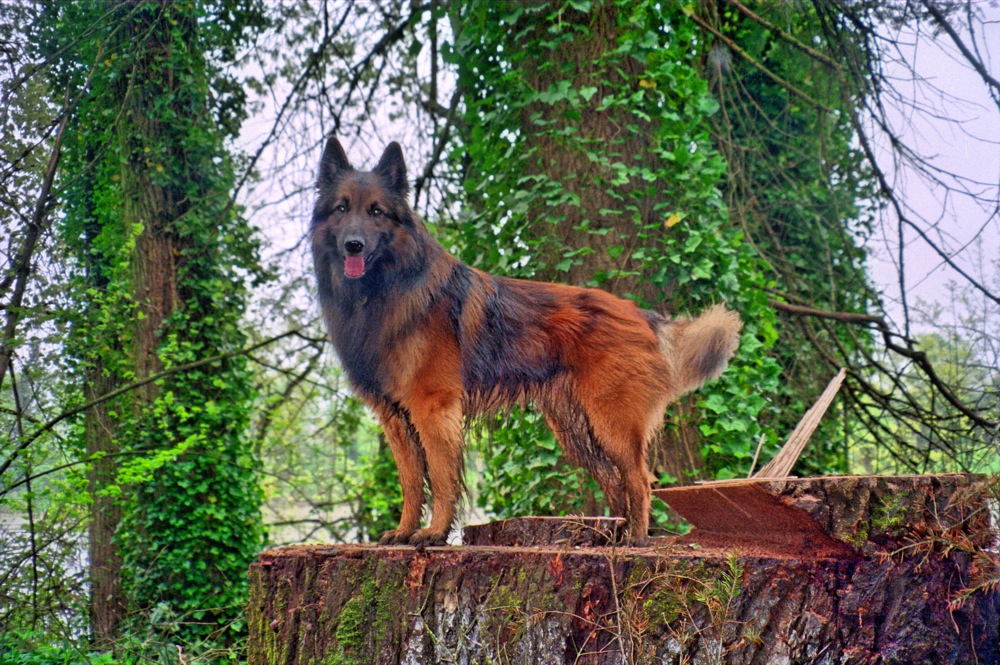
At 33 months, he is blacker still, yet not as black as he would be in another year or so.
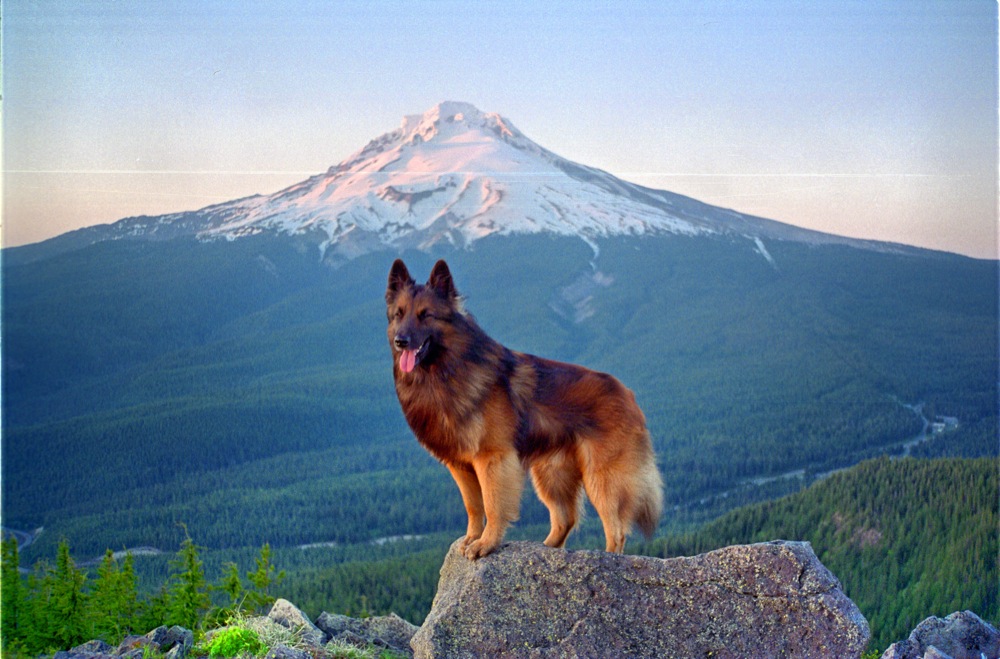
In front of Mt. Hood at 35 months.
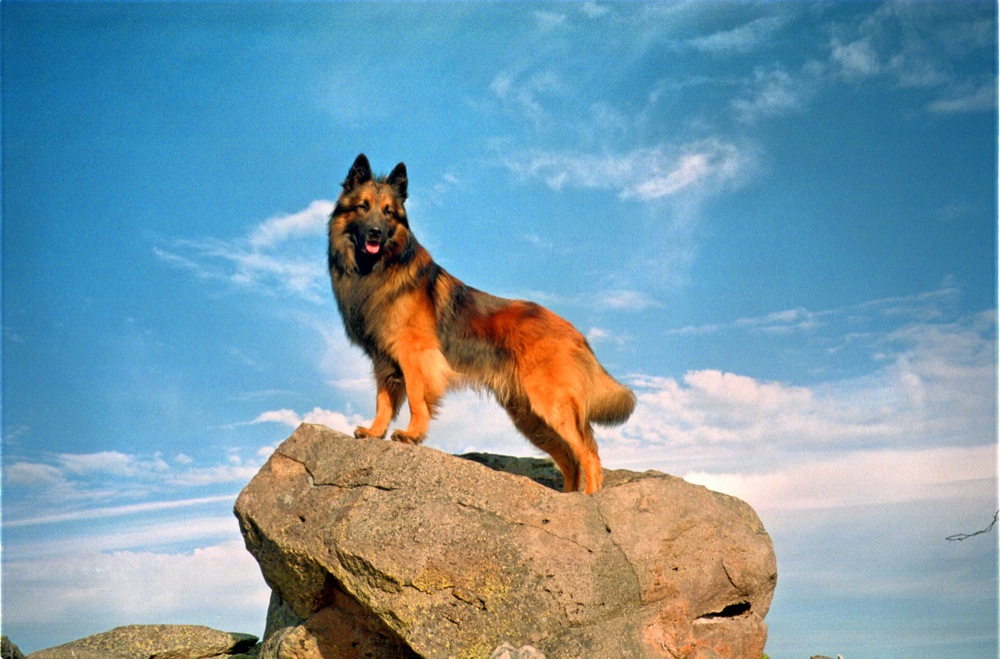
Doing his Rin-Tin-Tin imitation.
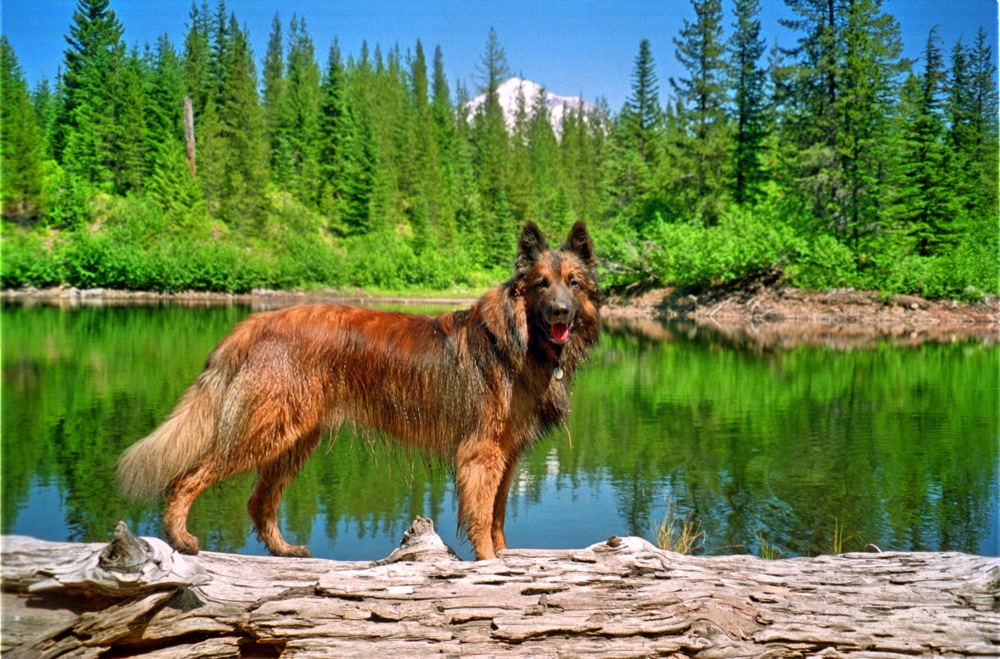
At 3 years, once more in the Mt. Hood National Forest, Chip finally has come pretty close to his fully mature coat.
Next: Competition